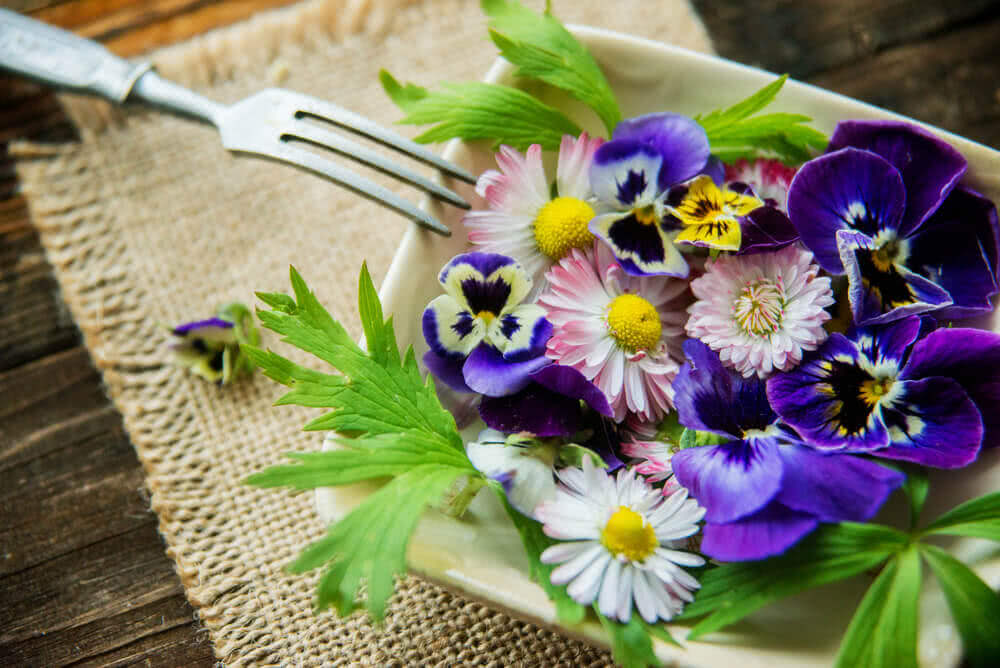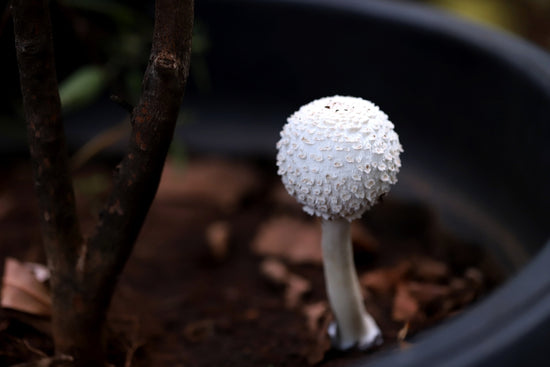Below is the list of 10 edible flowers:
1. Bee balm (Monarda didyma)
- Bee Balm flowers are uniquely shaped, scarlet or pink flowers that not only add colour and interest to flower beds but also enhance the taste of food and beverages. These flowers bloom in July - August on plants that are 2-4 feet high.
- Bee balm can withstand a variety of light and soil conditions but prefers a sunny location with rich, moist soil.
- While planting, space the seeds 2 feet apart, as bee balm spreads rapidly. Deadhead wilted flowers to extend the bloom period.
- Bee balm flowers have citrus, minty flavour.It is used to garnish salads, or to make bee balm tea.
- For making Bee Balm tea steep and boil two tablespoons chopped fresh flowers (or 1 tablespoon dried flowers), strain, and serve.

2. Borage (Borago officinalis)
- Borage is an annual that grows 2-3 foot tall with blue, star-shaped flowers in midsummer.
- Sow seeds during spring in a sunny location.
- It prefers light, rich, and well-aerated soil.
- Post-germination, thin the seedlings so that the plants are 2 feet apart.
- Once established, Borage reseeds itself quickly.
- For growing Borage indoors, place it at a south window with plenty of moisture and ample root space.
- Borage flowers have a crisp, cucumber flavour and are used in salads, as garnishes, float in drinks or freeze in ice cubes.
- Candied Borage flowers are used to decorate cakes, pastries, and desserts. Borage does not dry thoroughly. If consumed in excess, it can have a diuretic effect.

3. Calendula (Calendula officinalis)
- Calendula or pot marigold is an annual that produces pale yellow to deep orange flowers.
- The plant blooms from late spring-midsummer, then decline in summer.
- Sow seed during early spring in full sun and well-drained soil; repeat in July for a fall harvest.
- Thin plants up to 12 inches apart.
- Though the Calendula flowers have a bitter flavour, they are valued for beautiful colour.
- Calendula petals are used in salads, soups, butter, rice, stews, poultry, or in tea.
- It is also used as a substitute for saffron.
- Dry individual petals on paper and store in a moisture-tight container. Read about how to grow calendula from seeds.

4. Chamomile (Matricaria recutita)
- Chamomile is an annual that grows with daisy-like flowers.
- Its sweet, apple fragrance and taste make chamomile famous for tea.
- The plant prefers in full sun to part shade and prefers sandy, well-drained soil.
- Sow Chamomile seeds in spring for it to bloom from late spring through late summer.
- Once established, Chamomile reseeds quickly.
- Harvest Chamomile flowers when the petals begin to droop.
- For preparing Chamomile tea, add 3 to 4 teaspoons fresh flowers or 1 to 2 teaspoons dried flowers in 1 cup boiling water. Cover and steep for about 3 minutes, then strain, and serve.

5. Chives (Allium schoenoprasum)
- Chives is a perennial that features Lavender-pink flowers in June. Buy chives seeds online.
- Deadhead regularly for continuous blooms.
- Harvest flowers as they begin to open.
- Chives can grow in full sun to partial shade.
- They prefer moist, well-drained soil and can reach up to 18 inches high.
- Chive flowers taste slightly like onion and are added to salads, vegetables, casseroles, cheese dishes, eggs, or cream cheese. Chive flowers do not dry thoroughly too.

6. Daylilies (Hemerocallis species)
- Daylilies bloom throughout summer featuring yellow, orange, red, and pink flowers.
- They are easy-to-grow perennials and range in height from 10 to 24 inches.
- Plant Daylilies in full sun or part shade. Slightly acidic, well-drained soil is ideal for plant growth.
- Divide Daylily clumps every 3-4 years.
- Daylily flowers have a sweet flavour.
- These flowers are used in salads or as garnishes.
- Dried daylily petals are a staple in Chinese sweet and sour soup.

7. Impatiens (Impatiens walleriana)
- Impatiens are long-blooming annuals that grow with glossy foliage and are available in colours, bi-colours, and double blooms.
- They grow in the shade to part sun in moist, organic soil.
- Indoors, place Impatiens in a sunny window or under artificial light.
- The flowers exude a sweet flavour and can are used for garnishing, in salads, or floated in drinks.

8. Lilac (Syringa vulgaris)
- Lilac is a shrub that grows about 15 feet high with colourful, fragrant flowers in early spring.
- The plant grows well in well-drained soil and full sun.
- For heavy bloom deadhead wilted flowers.
- Some lilacs are aromatic, and their floral taste is used in vanilla yogurt or candied as a cake or for pie decoration.

9. Nasturtium (Tropaeolum majus)
- Nasturtium is a 12-inch-tall annual that grows with richly coloured red, orange, and yellow flowers.
- Sow seeds 1/2 inch deep during early spring. Buy nasturtium flower seeds online.
- Plants produce the most flowers in full sun.
- Do not fertilize.
- When planted in highly fertile soil, Nasturtium produces lush foliage but few flowers.
- For growing indoors, plant them on a south window, use a mild fertilizer once a month, water sparingly, and use a coarse, porous potting mix.
- Nasturtium flowers exude a peppery, zesty taste that can be used as a substitute for mustard in sandwiches.
- You can use these flowers to salads or cure in vinegar.
- They make an attractive garnish or add colour when added to butter.

10. Roses (Rosa species)
- Edible roses are a rage in the culinary industry.
- Flower size, fragrance, and flavour vary among the many rose species and varieties.
- Roses of older types, such as rugosa roses, are the most flavorful.
- To bloom to their fullest, Roses need full sun and fertile, well-drained soil, regular watering, fertilizing, and pruning.
- Roses have a perfumed taste and are added to salads or make jelly.

Caution Before Using Edible Flowers:
Do not pick flowers that are exposed to pesticides or are growing by the roadside. Take preventive measures if you are suffering from fever, asthma, or have allergies.
Ideal Time to Harvest Edible Flowers
- Harvest edible flowers after the dew had evaporated.
- For best flavour choose flowers at their peak.
- After picking, immerse long-stemmed flowers in water and store them in a cool place.
- Use short-stemmed blossoms within a few hours after harvesting or store them in a plastic bag in the refrigerator.
- Gently wash the flowers before using to remove insects and soil.












